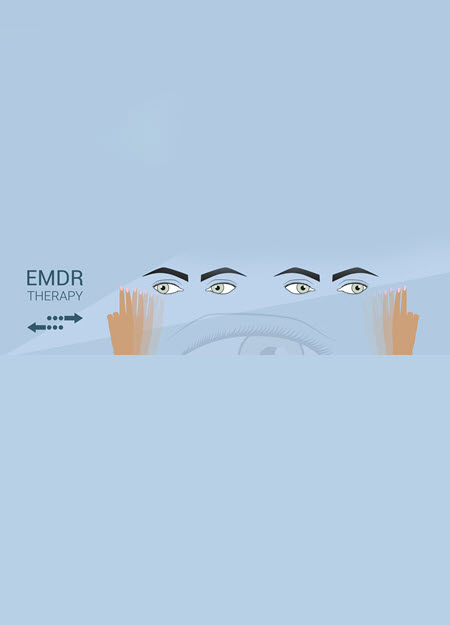 This is not worth it. You want a new life. But how?
This is not worth it. You want a new life. But how?
You didn’t sign up for this… but it happened.
Now you have to deal with it, but you can’t. The nightmares and the crying jags. The anxiety and dread of another day. You just want to escape. But there is nowhere to go. How do you get out of your head? It’s impossible.
You need someone to get inside and fix it. Change the wiring, clean out the gook sticking horrific images of loss and bloodshed behind your eyeballs. Maybe then you can have peace again. Imagine such a life? No more dread, no more sitting with your back against the wall, waiting, planning for possible carnage while everyone else is eating dinner and talking nonsense. How nice it would be to be free.
Are you worn out and stuck in a life you didn’t plan?
Somehow you’re living the dream, but it’s not yours, and you can’t leave the dream without hurting friends and family. You don’t want to cause problems, so you keep up their dream. Only lately, you’re struggling to get out of bed, and anxiety is causing you to feel faint most of the day. You finally fall asleep for about an hour and then wake up, thinking, worrying, thinking, worrying. It’s the same thinking and worrying until dawn. Everyone suffers; you don’t want to add to it, but your resolve is collapsing.
They are going to find out you’re a fraud. And then what?
The people at work don’t have a clue. It’s become unbearable. If you complain, you’re out of a job, so you eat it. You keep eating it, the abuse, the lack of respect, the audacity of your boss to expect you to roll over.
You’re not dead yet. Do something.
You know it, and everyone is beginning to get it. You are a terrible mother. You would rather work than stay at home with a demanding infant that wants only to suck on your breast. Borderline disgusting. You don’t want to bond. You don’t want to get up and change a diaper or nurse. You just want to sleep for 20 hours, nonstop. Everything you heard about being a new mother is a lie. It’s more like propaganda to dumb you down.
 EMDR is a way forward…
EMDR is a way forward…
Eye Movement Desensitization and Reprocessing (EMDR) is a therapy used to address those painful life experiences that contribute to the problems you’re facing in your life today. It’s used to treat trauma for all ages, and it’s an empirically validated treatment for post-traumatic stress disorder (PTSD) in adults.
It’s an evidence-based treatment endorsed by the World Health Organization, Israeli National Council of Mental Health, U. S. Departments of Veterans Affairs and Defense, and National Institute for Clinical Excellence.
So… what is it??
EMDR was developed by Francine Shapiro quite by accident. She was taking a walk in the park, repeatedly ruminating the same upsetting thoughts and feelings. She noticed how her upset suddenly disappeared as she shifted direction and moved her eyes sideways. Thus began her fascination with the relationship between eye movement and accessing memory networks.
Francine began with what she called the Adaptive Information Processing (AIP) model and realized how causes and effects of undue suffering were really the results of maladaptive, unprocessed memories that are stuck with no way out. These memories need to get unstuck and realigned properly in the memory chain to make things right. These unprocessed disturbing memories still carry a high emotional charge, are stuck in a feedback loop of reliving the incident (or faulty belief), and create the symptoms of PTSD or other disorders when triggered.
Memories that have been adequately processed and put in the right context, no matter how distressing, can be remembered without being relived with an emotional charge or create undue stress.
EMDR therapy treats past disturbing memories, present triggers that re-ignite these distressing memories, and prepares you by building future templates to effectively manage similar situations in the future.
An eight-phase approach completes the process for healing: (1) History-taking; (2) Preparation; (3) Assessment; (4) Desensitization; (5) Installation; (6) Body Scan; (7) Closure; and, (8) Reevaluation. Using EMDR involves eye movements – rapid back and forth movement – which mimics REM sleep, which is also when the brain heals and processes the day’s information to make things right and prepare for another day.
“EMDR should be able to take advantage of sleep-dependent processes, which may be blocked or ineffective in people with PTSD, to allow effective memory processing and trauma resolution.” (Van Der Kolk, p. 263). Van der Kolk, B. A. (2014). The body keeps the score: Brain, mind, and body in the healing of trauma. New York: Viking Penguin
Rhythmic tapping (butterfly hugs as you pat pat pat your shoulders or use your palms to drum your thigh) may also be used, and lights and sounds help move the processing along. I like to keep things simple with tapping and eye movements to a heartbeat or a swoosh-swoosh beat playing on a sound machine.
 It might sound complicated, but it’s really not…
It might sound complicated, but it’s really not…
Did you know that thought creates substance? That means that what you dwell on builds your neural pathways, which are then reinforced by your attitudes and what you expect to happen in life.
The exploding field of neurobiology shows us that the power of visualization can physically change our brains! Negativity can be undone and replaced with new thoughts that promote growth and possibility!
We can use EMDR to trace back memory networks that misled you to believe and act in unhealthy ways. Those networks will be reprocessed and integrated into a healthier worldview.
Be brave with me. We can address your trauma, your memories, adverse life experiences… and those touchstone moments that altered your path away from a joyful, fulfilling life. Even if you have never experienced a secure, safe childhood, we can create networks for secure, safe attachments, which will lead to more confidence and trust in yourself and others. Your relationships will bloom.
EMDR can be used to treat all kinds of things…
Here’s a quick list: phobias, panic disorders, generalized anxiety disorder, depression, attachment disorders, conduct problems, self-esteem issues, grief and mourning, psychotic disorders, chronic pain, migraine headaches, medically unexplained physical symptoms, and all sorts of trauma.
Sophia* was in a terrible car accident where the car rolled over twice. The windshield glass shredded her face. She was 16 and suffered from the scars on her face and her fear of driving. The plastic surgery helped, and after three failed tries, she forced her way to pass her driving test.
For years, Sophia white-knuckled the steering wheel with a clenched jaw and shallow breath, waiting for impact again. She forced herself to drive, but she was tired of feeling like a wreck and reliving the moment of impact. She had been in the passenger seat when the oncoming car went through light and into her side. Boom! Shattered glass, body thrown. It was going to happen again.
After coming in for EMDR therapy sessions, Sophia was able to reprocess and desensitize her traumatic memories and no longer react. Today, she enjoys driving, and the adventure and freedom it brings is life-changing.
Carl*, a paramedic and firefighter, had been on the scene of many horrible accidents and fires, providing medical attention to the dying. After a few years of service, he began to suffer from nightmares of the dying victims. It was as if the souls of the dead were crying out their pain, begging to live, but he couldn’t save them. It was all his fault. He could have done more.
Carl feared sleep and felt as if he was losing his mind. He couldn’t understand what was happening and why he was unable to manage his life. He took a medical leave and then resigned. Drugs and alcohol didn’t help, and he finally decided to try this weird kind of eye movement therapy. After several sessions of EMDR, Carl was able to grieve for his patients and release the crippling nightmares and sleep again.
Isn’t it time?
Instead of talk, talk, talk, let’s try to get in your head, accessing your neural pathways to set things right – without surgery.
I can show you how to access memory networks and fix the faulty wiring to make what ails your mind right and ease your suffering with wiring the right connections.
Call me for a free 30-minute consultation to begin integrating your past into a happier, healthier you with an EMDR treatment plan: (949) 933-1242.
*Names changed to preserve client confidentiality.


